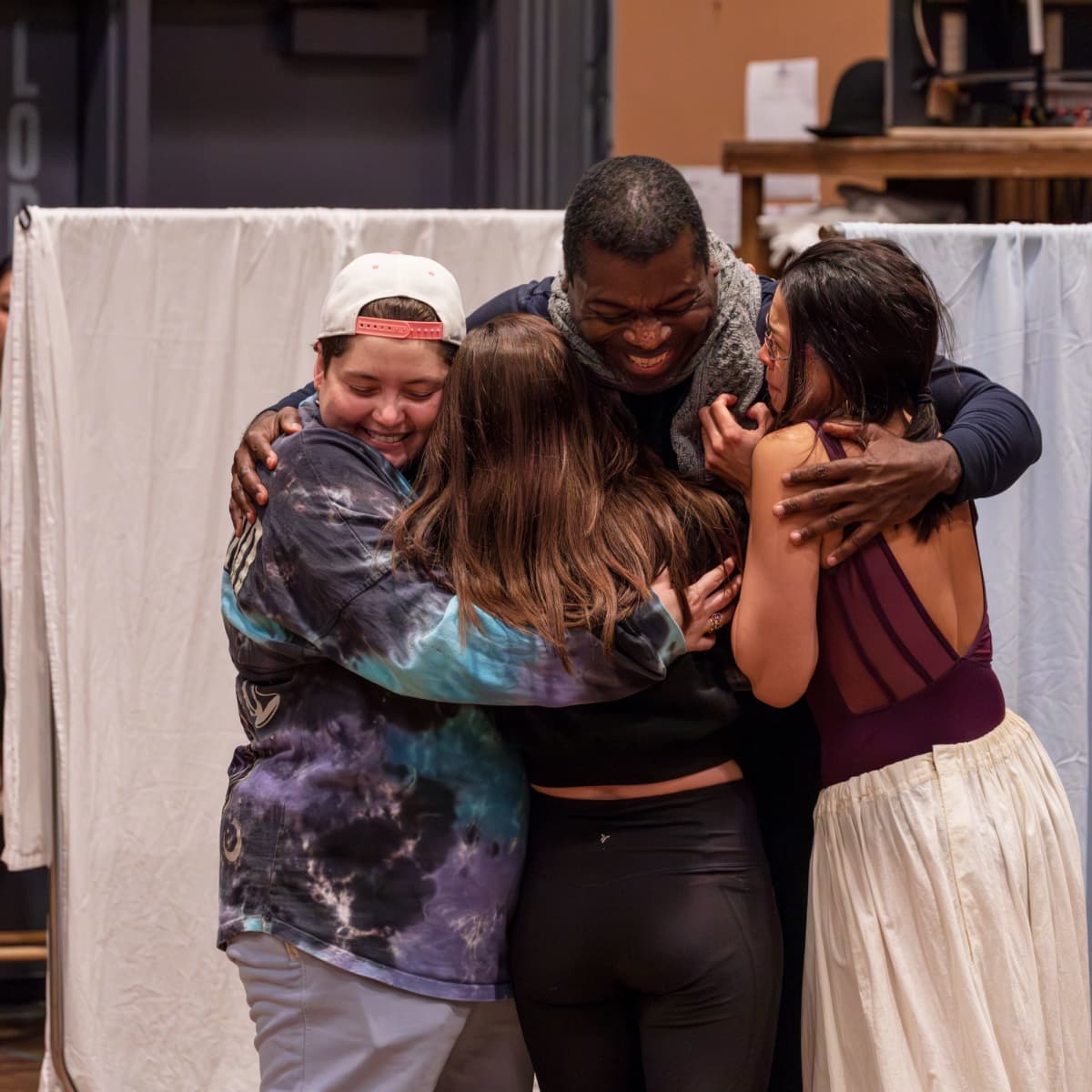PHOTO FLASH
U.S. History On Stage
Take a look through the last century, as seen on the stages of Seattle Rep.
Pre-1900
1882 - David Grimm’s Ibsen In Chicago: An unlikely ensemble of scrappy Scandinavian immigrants come together to fulfill their dreams of putting on the first production of Henrik Ibsen’s Ghosts in America. Performed at Seattle Rep in 2018.
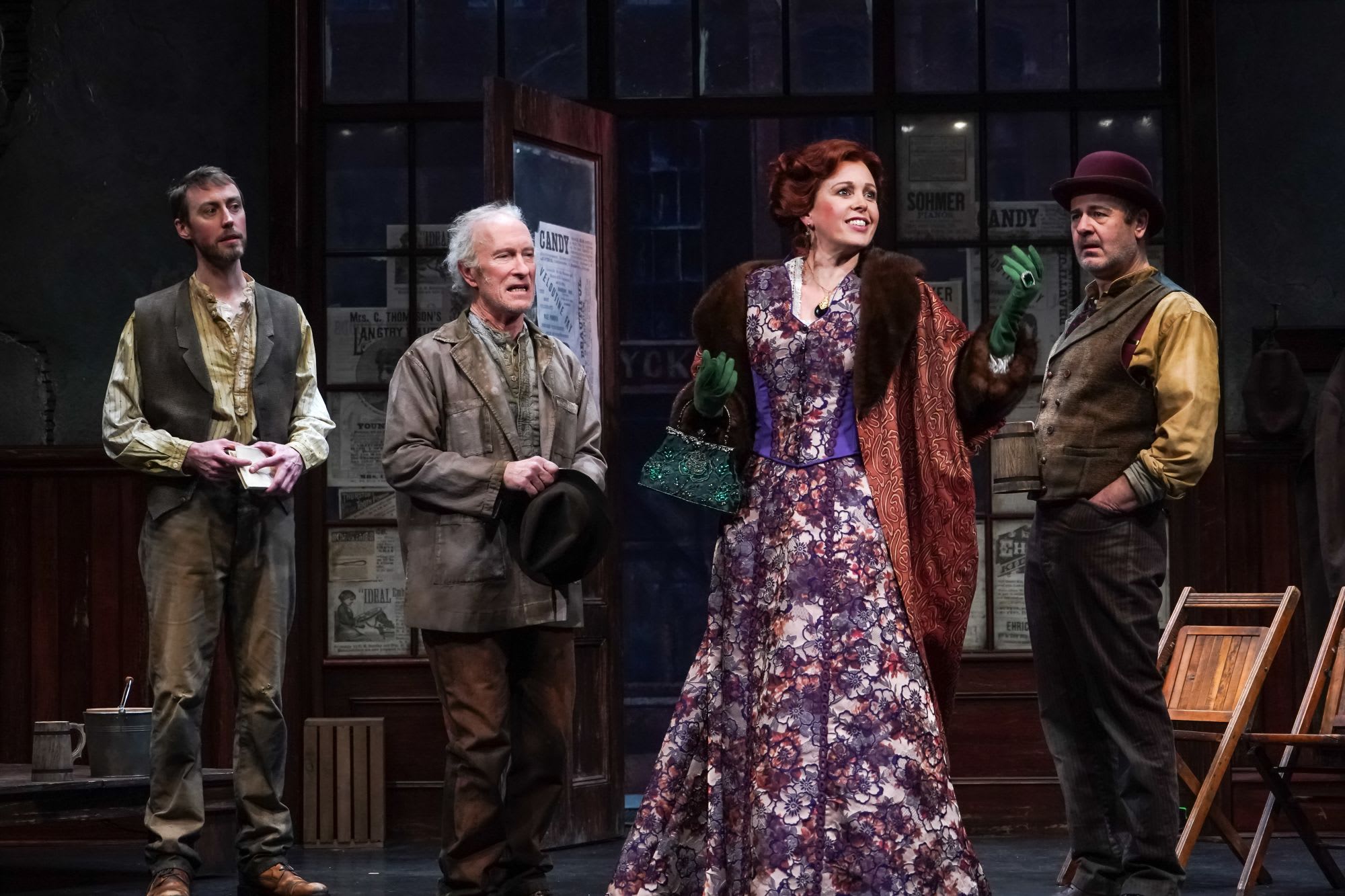
Christopher McLinden, R. Hamilton Wright, Kirsten Potter, and Allen Fitzpatrick in Ibsen in Chicago (2018). Photo by Alan Alabastro.
1900–1910
1904 - August Wilson’s Gem of the Ocean: Aunt Ester, the community’s spiritual advisor, attempts to help Citizen Barlow find spiritual redemption through the awakening of the City of Bones. Speaking to the time in which Gem of the Ocean was set, Wilson said “You have to remember, in 1904, any black person who was 42 or older was probably born into slavery. That generation had to decide what to do with their freedom. There were no models. There were no rules. You had to find out what emancipation and citizenship meant and carve out a way of living.” Performed at Seattle Rep in 2007.

Michele Shay, Khalil Kain, and Allie Woods in Gem of the Ocean (2007). Photo by Chris Bennion.
1910–1920
August Wilson’s Joe Turner’s Come and Gone: Set in 1917, Joe Turner’s Come and Gone is the story of Harold Loomis, who returns to Pittsburgh in search of his wife. He is haunted by the memory of bounty hunter Joe Turner, the man who had illegally enslaved him. Loomis is unable to fully embrace or release the past. His search brings him to Seth and Bertha’s boarding house with his young daughter, Zonia, where “conjure man” Bynum shows him that he really is searching for himself. Performed at Seattle Rep in 1987.
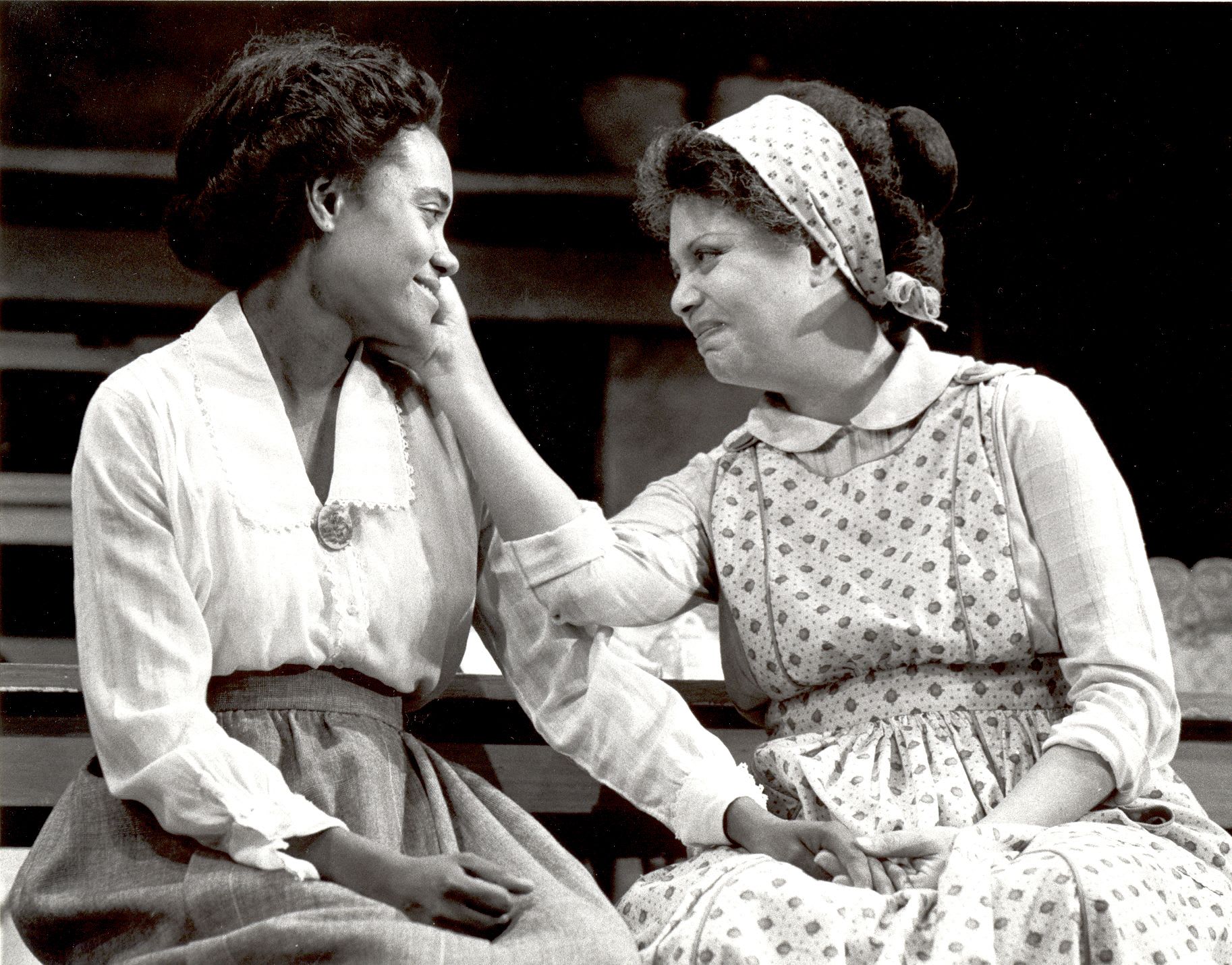
Kim Burroughs and Ellen Holly in Joe Turner’s Come and Gone (1987). Photo by Chris Bennion.
1920–1930
1927 - August Wilson’s Ma Rainey’s Black Bottom: In a Chicago recording studio, the characters deal with issues of politics, philosophy, art, and religion, all within the context of the historical exploitation of Black musicians by white managers. Performed at Seattle Rep in 2005.

Cynthia Jones and the cast of Ma Rainey’s Black Bottom (2005). Photo by Chris Bennion.
1930–1940
1930s-40s - Woody Sez: The Life & Music of Woody Guthrie, devised by David M. Lutken with Nick Corley and Darcie Deaville, Helen Jean Russell, and Andy Teirstein: The Rock and Roll Hall of Fame calls Woody Guthrie "the original folk hero; a man who, in the Thirties and Forties, transformed the folk ballad into a vehicle for social protest and observation.” The legendary singer-songwriter defined an American era of social consciousness and political expression, and this musical portrait celebrated the colorful life and rich musical legacy of America’s great folk troubadour. Performed at Seattle Rep in 2017.
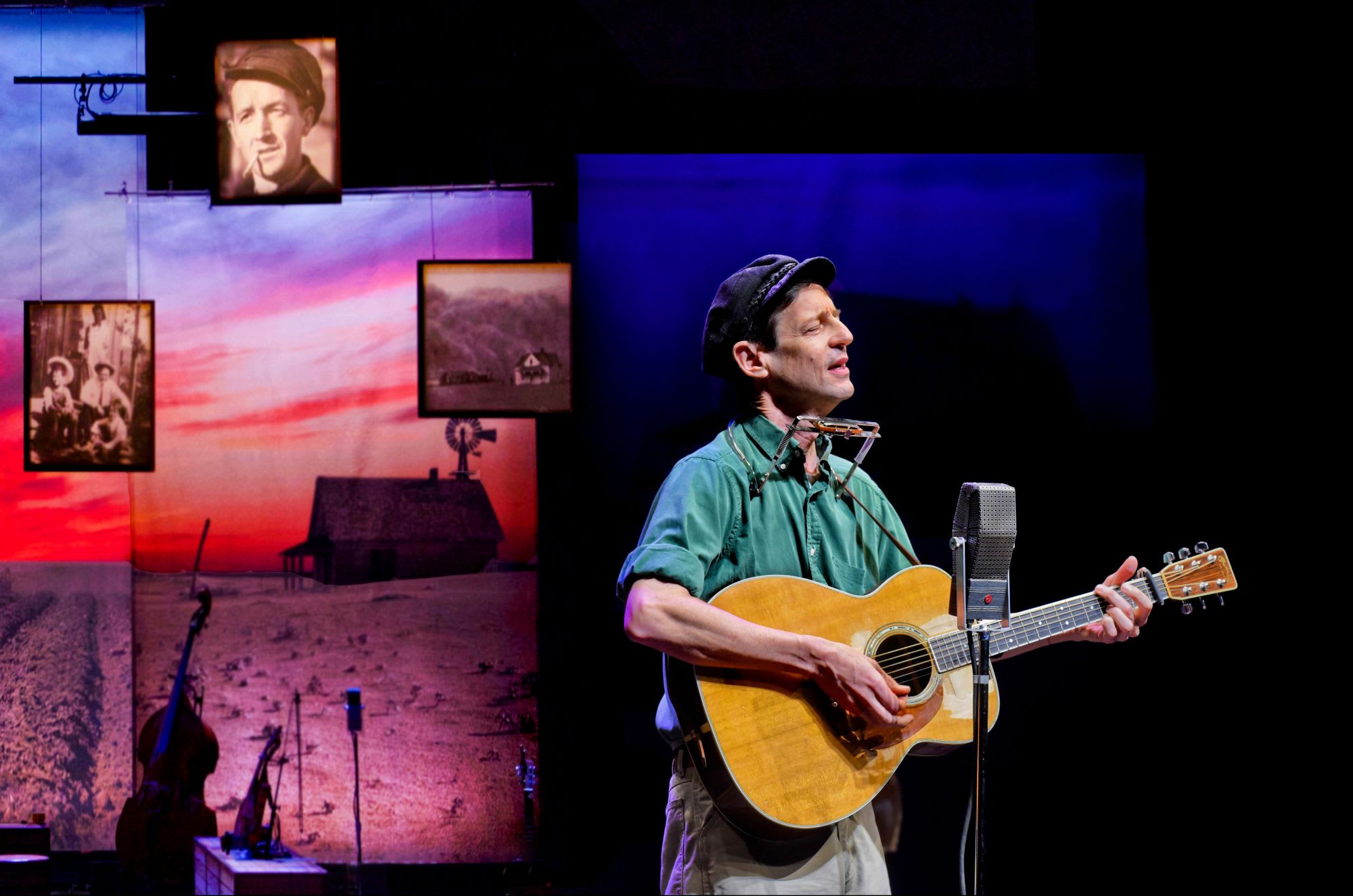
David M. Lutken in Woody Sez: The Life & Music of Woody Guthrie (2018). Photo by Michael Doucett.
1936 - August Wilson’s The Piano Lesson: In the aftermath of the Great Depression, a family fights over whether or not to sell a piano, which has carved into it the faces of their enslaved great-grandparents. Performed at Seattle Rep in 1993 and 2015.

Stephen Tyrone Williams, Derrick Lee Weeden, Yaegel T. Welch, and G. Valmont Thomas in The Piano Lesson (2015). Photo by Chris Bennion.
1937 - Cheryl L. West’s Pullman Porter Blues: Set in 1937, three generations of porters are hard at work on the luxurious Panama Limited train. Midwest blues songs accompany their journey from Chicago to New Orleans as the porters confront dark secrets from their past and tough truths about their future together. Performed at Seattle Rep in 2012.

E. Faye Butler and the cast of Pullman Porter Blues (2013). Photo by Chris Bennion.
1940–1950
1948 - August Wilson’s Seven Guitars: The play opens after Floyd Barton’s funeral in the Hill District of Pittsburgh. Floyd Barton was a talented blues guitarist on the verge of signing a deal with a record company in Chicago when he was killed. A group of his friends and members of his band join together and remember Floyd in his final days through a series of flashbacks. Performed at Seattle Rep in 1997.

Leslie DoQui and Alex Morris in Seven Guitars (1997). Photo by Chris Bennion.
1950–1960
1950s-60s - Lorraine Hansberry’s A Raisin in the Sun: Lena Younger lives with her extended family in a cramped apartment on Chicago’s South Side. On their unknowing behalf, she places a down payment on a home in Clybourne Park—an affordable white neighborhood. Racial intolerance attempts to derail the family’s journey towards the American Dream. Performed at Seattle Rep in 2016.
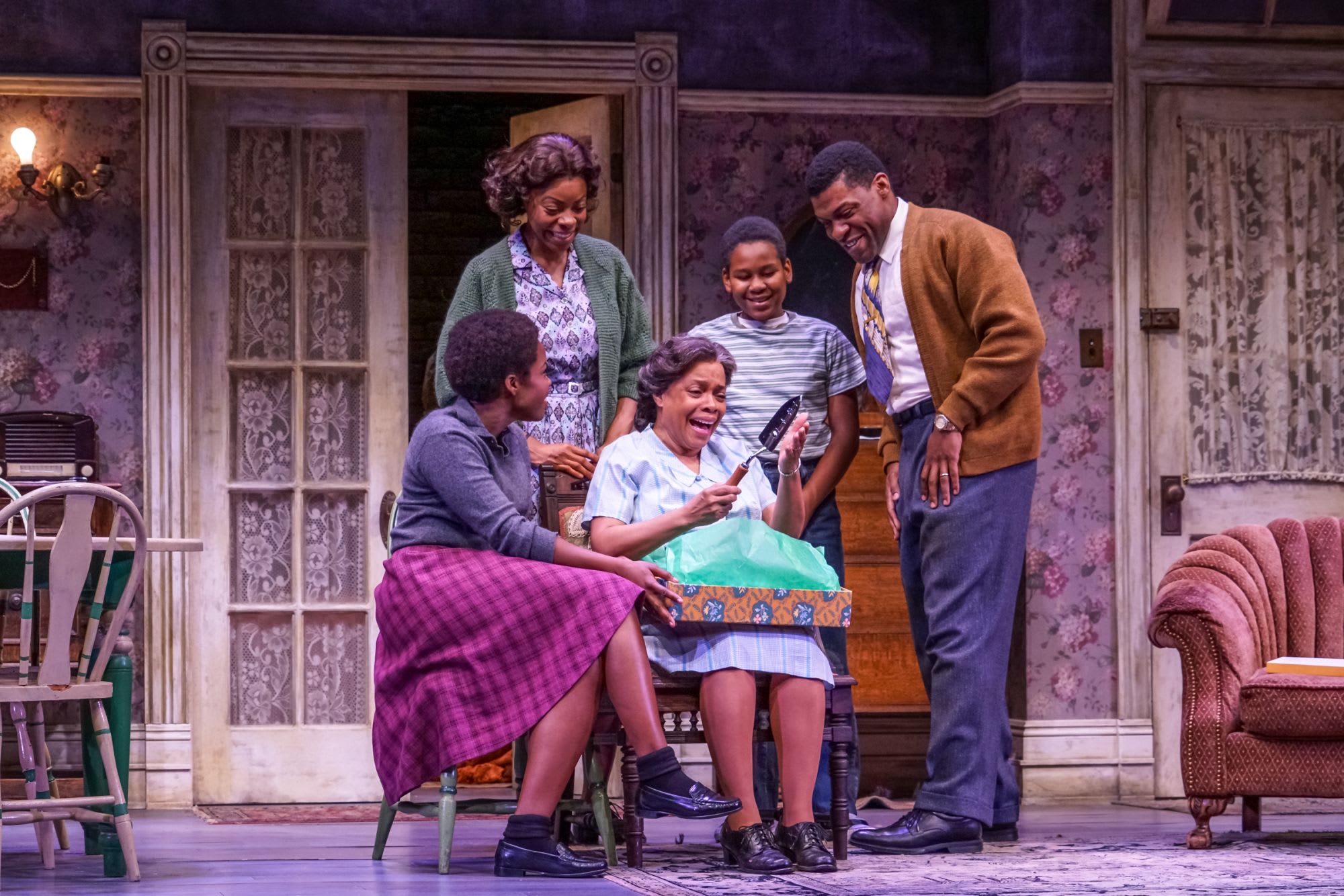
The cast of A Raisin in the Sun (2016). Photo by Alan Alabastro.
1957 - August Wilson’s Fences: When his rise through the Negro baseball leagues hit the ceiling of racial prejudice, Troy Maxson turned away from a world of unfulfilled promises and denied opportunities. But in 1957, his son Cory, an emerging football star, sees the world through very different eyes, and his wife Rose yearns for an outlet for her love. Performed at Seattle Rep in 1986 and 2010.
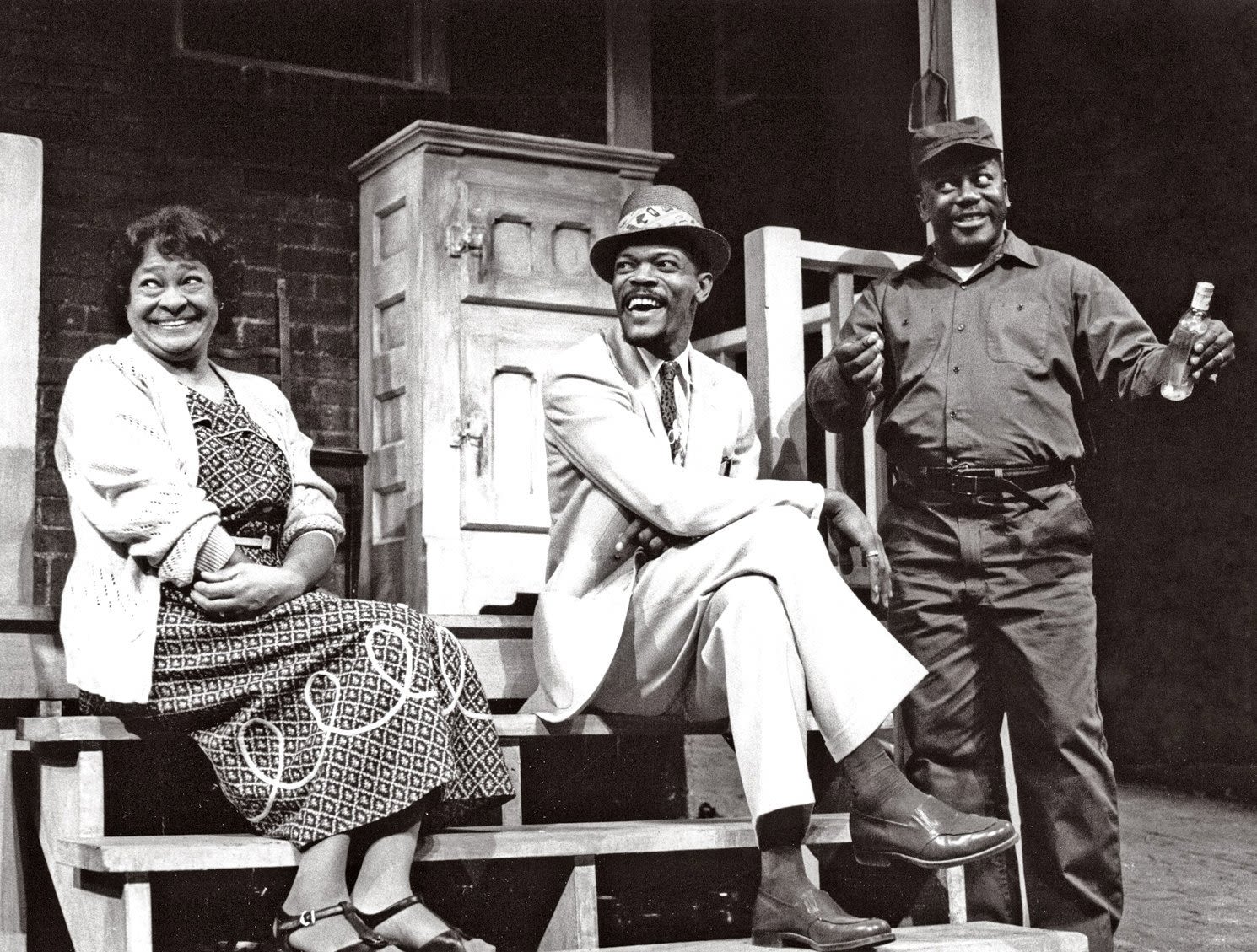
Frances Foster, Samuel L. Jackson, and Robert Colston in Fences (1986). Photographer unknown.
1960–1970
1963 - Christina Ham’s Nina Simone: Four Women: When “The High Priestess of Soul” Nina Simone heard about the tragic bombing death of four young girls in an Alabama church in 1963, the songstress turned to her music as a means of expressing the country’s agony. “Four Women” and Simone’s other evocative activist anthems sang a truth that the world needed to hear. And it is a truth that remains sung to this day. Performed at Seattle Rep in 2019.

Porscha Shaw, Shontina Vernon, Shaunyce Omar, and Brittany Nicole Simpson in Nina Simone: Four Women (2019). Photo by Nate Watters.
1963 - Robert Schenkkan’s All the Way: It's 1963 and an assassin's bullet catapults Lyndon Baines Johnson into the presidency. A Shakespearean figure of towering ambition and appetite, the charismatic, conflicted Texan hurls himself into Civil Rights legislation, throwing the country into turmoil. But in faraway Vietnam, a troubling conflict looms. Performed at Seattle Rep in 2014..

Kenajuan Bentley in All the Way (2014). Photo by Chris Bennion.
1965–1968 - Robert Schenkkan’s The Great Society: In his second term of office, LBJ struggles to fight a war on poverty as the war in Vietnam spins out of control. Besieged by opponents, Johnson marshals all his political wiles to try to pass some of the most important social programs in U.S. history. The Great Society depicts the larger-than-life politician's fall from grace, as his accomplishments—the passage of hundreds of bills to enact reform in civil and voting rights, poverty, and education—are overshadowed by the bitter failure of the Vietnam War. Performed at Seattle Rep in 2014.
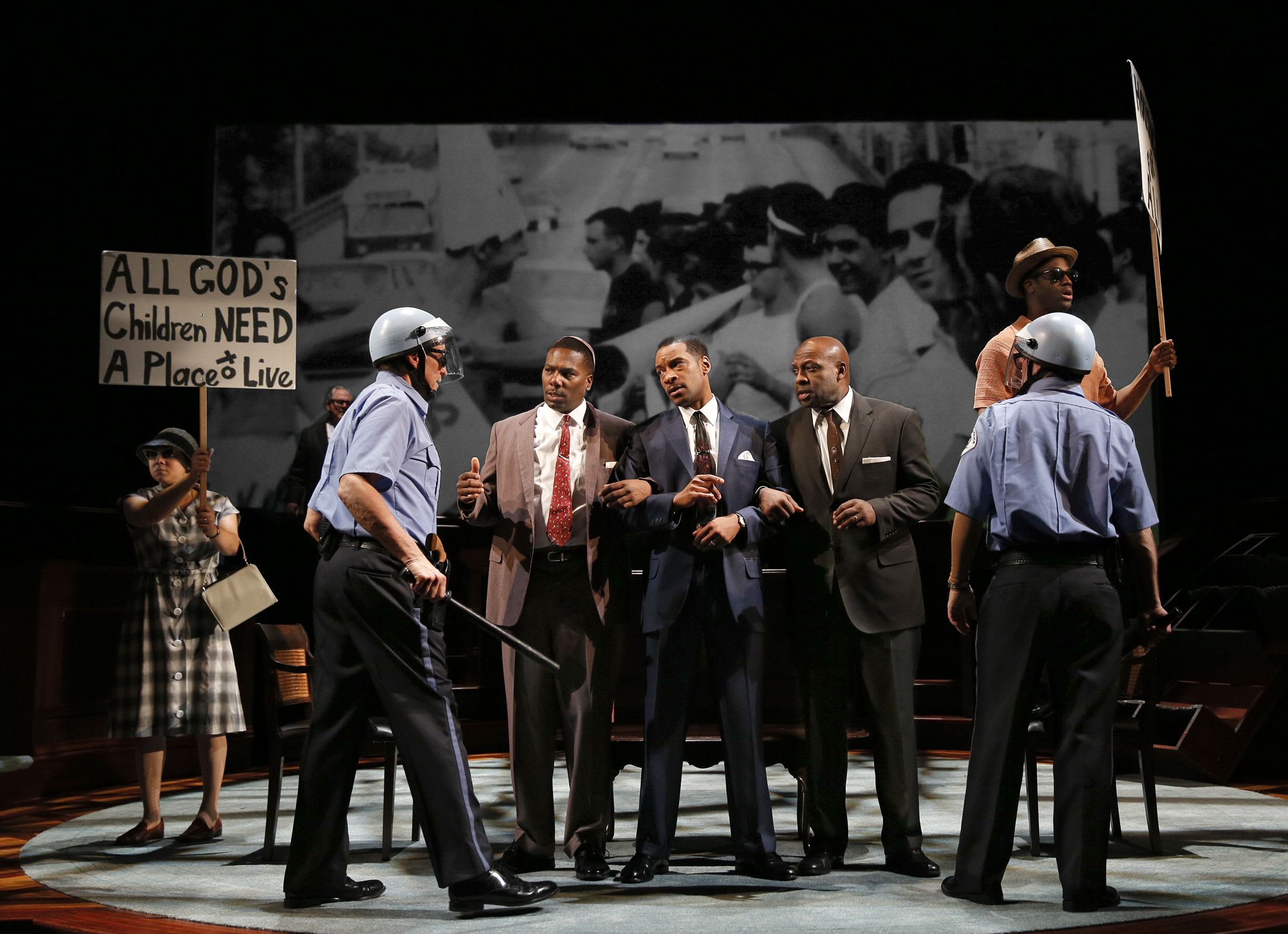
The cast of The Great Society (2014). Photo by Chris Bennion.
1969 - August Wilson’s Two Trains Running: It’s 1969, there’s a new president in the White House, and racial tensions are on the rise. At a critical moment in the Civil Rights movement, Memphis is forced to consider selling his restaurant to the city of Pittsburgh as urban planning eats away at his beloved neighborhood. Featuring a captivating slice-of-life cast of characters, Two Trains Running is August Wilson’s portrait of a defining moment in American history. Performed at Seattle Rep in 1991 and 2018.

Lawrence Fishburne and Ella Joyce in Two Trains Running (1991). Photo by Gerry Goodstein.
1970–1980
1975 - Qui Nguyen’s Vietgone: An all-American love story about two very new Americans. It's 1975. Saigon has fallen. He lost his wife. She lost her fiancé. But now in a new land, they just might find each other. Performed at Seattle Rep in 2016.

James Ryen and Will Dao in Vietgone (2016). Photo by Navid Baraty.
1977 - August Wilson’s Jitney: In the 1970s, when licensed cabs refused to service Pittsburgh’s predominantly Black Hill District, Jim Becker establishes a rideshare service to meet the needs of his community. Faced with the devastating news that the city is about to shut down their business, Becker and his cab drivers struggle to confront an uncertain future. An emotional family reunion, generational conflict, and workplace gossip set the stage for drama as each man fights to prevail in the face of adversity. Performed at Seattle Rep in 2002 and 2020.
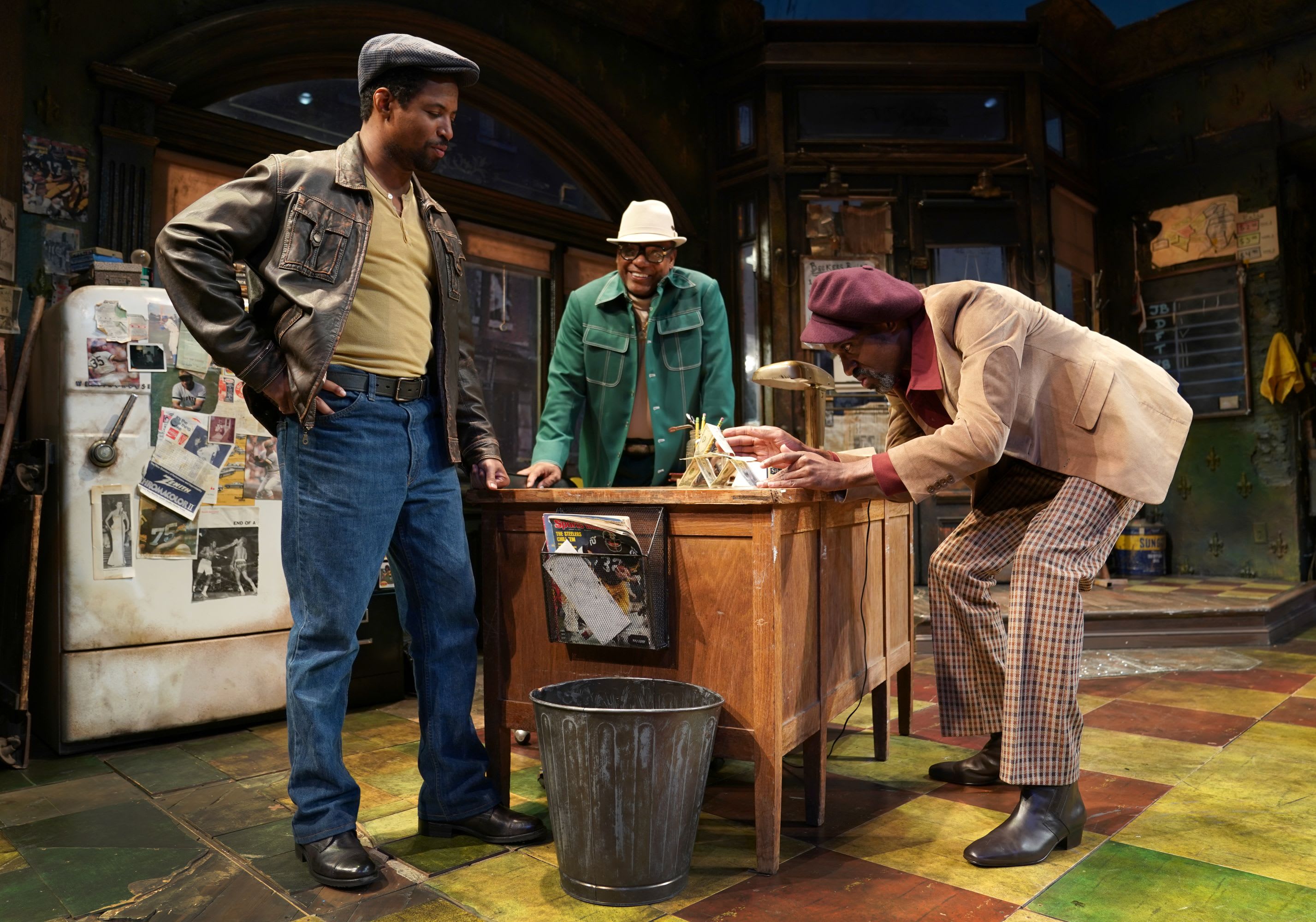
Amari Cheatom, Harvy Blanks, and Brian D. Coats in Jitney (2020). Photo by Joan Marcus.
1980-1990
Set throughout 1976-1997, and on one day in 1991 - Karen Hartman's Roz and Ray: The gripping untold story of one doctor’s ethical struggle at the onset of the AIDS crisis in the 1980s. Dr. Roz thinks she’s found the right cure in a new miracle drug for Ray Leon’s hemophiliac twins. However, unspeakable tragedy strikes and it is discovered that Ray’s sons face immediate danger. Performed at Seattle Rep in 2016.

Ellen McLaughlin and Teagle F. Bougere in Roz and Ray (2016). Photo by Alan Alabastro.
1985 - August Wilson’s King Hedley II: The play follows King Hedley, an ex-con trying to rebuild his life. Drawing on characters established in Seven Guitars, King Hedley II shows the shadows of the past reaching into the present as King seeks retribution for a lie perpetrated by his mother regarding the identity of his father. Performed at Seattle Rep in 2000.

Tony Todd in King Hedley II (2000). Photo by Chris Bennion.
1990-2000
1997 - August Wilson's Radio Golf: Harmond Wilks, a lawyer running to be the first black mayor of Pittsburgh, is eager to declare the remaining homes of the Hill District “a blight” in order to make room for commercial redevelopment. One of the remaining homes is the ancestral house of Aunt Ester, a character from Wilson’s Gem of the Ocean. Performed at Seattle Rep in 2006.

James A. Williams and Rocky Carroll in Radio Golf (2006). Photo by Chris Bennion.
2000-2010
2001 - Irene Sankoff and David Hein's Come From Away: September 11, 2001 was an ordinary day in isolated Gander, Newfoundland — until it wasn’t. 38 planes were diverted to its doorstep on that fateful day, making this small town unexpected hosts to an international community. The camaraderie that followed reminds us all of the power that comes from opening up your heart and your home. Primarily takes place in Canada. Performed at Seattle Rep in 2015.
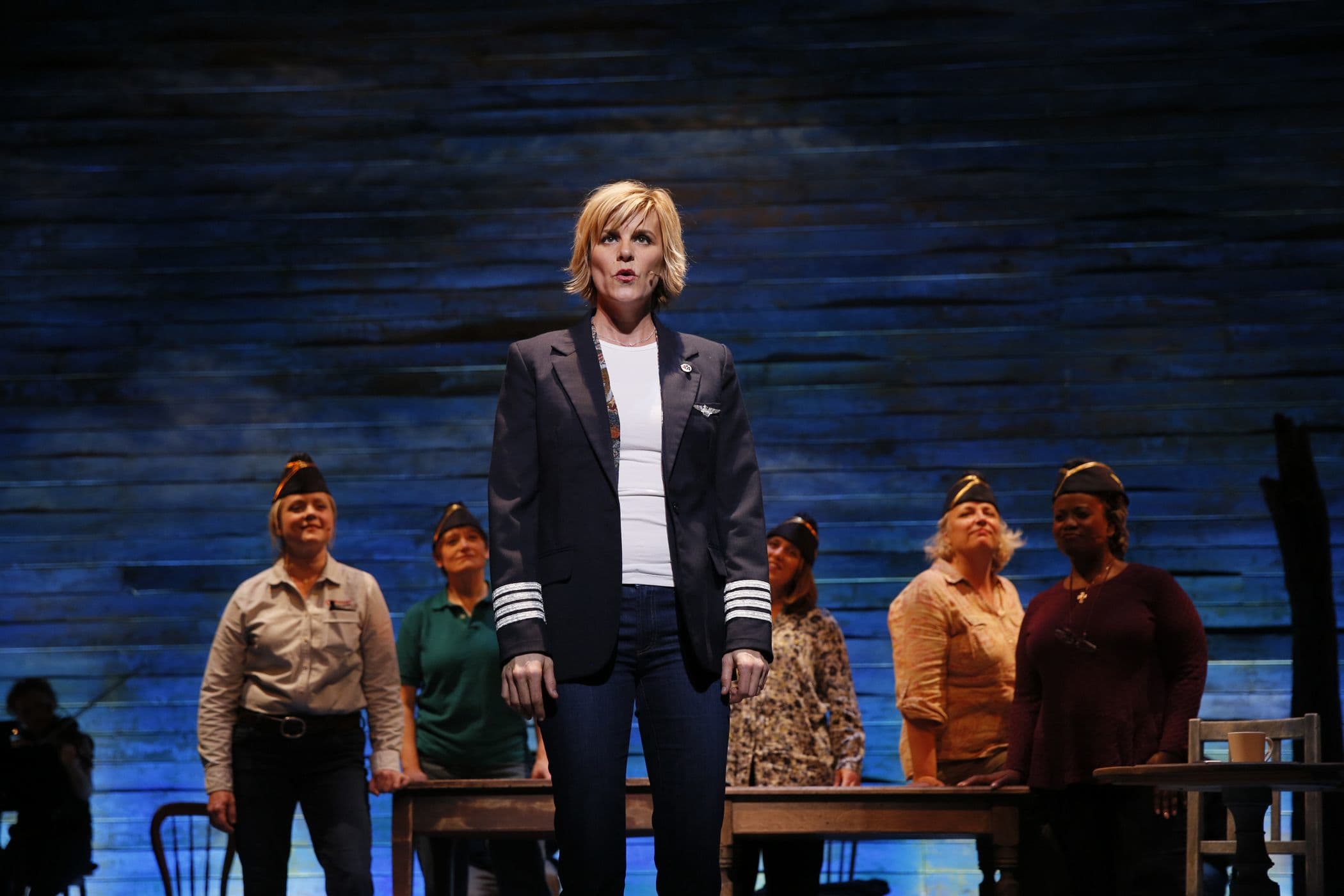
Jenn Colella and the cast of Come From Away (2015). Photo by Chris Bennion.

